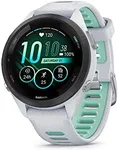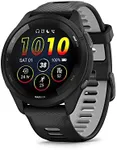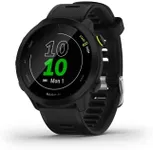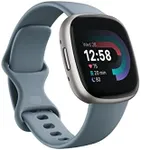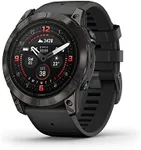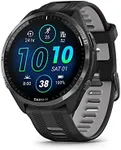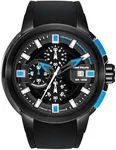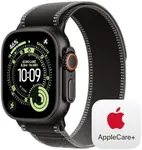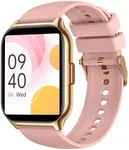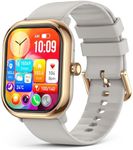Buying Guide for the Best Triathlon Training Watches
Choosing the right triathlon training watch can significantly enhance your training and performance. A good triathlon watch should be able to track multiple sports, provide accurate data, and be durable enough to withstand various conditions. Here are some key specifications to consider when selecting a triathlon training watch and how to navigate them to find the best fit for your needs.Multisport ModeMultisport mode allows you to switch between different sports (swimming, cycling, running) without stopping the activity tracking. This is crucial for triathletes as it ensures seamless data recording across all segments of the race. Look for watches that offer easy transitions between sports and customizable settings for each sport. If you are a beginner, a basic multisport mode might suffice, but advanced athletes may prefer more detailed customization options.
GPS AccuracyGPS accuracy is essential for tracking your routes, distances, and pace accurately. A watch with high GPS accuracy will provide reliable data, which is crucial for analyzing your performance and planning your training. GPS accuracy can vary, with some watches offering multi-band GPS for better precision. If you train in areas with challenging GPS conditions (like dense forests or urban environments), opt for a watch with advanced GPS capabilities.
Heart Rate MonitoringHeart rate monitoring helps you understand your exertion levels and optimize your training intensity. Watches can measure heart rate through optical sensors on the wrist or chest straps. Wrist-based sensors are more convenient, while chest straps tend to be more accurate. Choose a watch with a heart rate monitoring method that suits your comfort and accuracy needs. For high-intensity training, a chest strap might be preferable.
Battery LifeBattery life determines how long your watch can operate between charges, which is particularly important for long training sessions and races. Watches with longer battery life are beneficial for endurance athletes. Battery life can range from a few hours to several days, depending on the GPS and other features in use. Consider your training duration and frequency to select a watch with adequate battery life.
Water ResistanceWater resistance is crucial for triathletes, especially during the swimming segment. A watch with good water resistance can withstand being submerged and continue to function accurately. Water resistance is usually measured in meters; a rating of 50 meters or more is generally sufficient for swimming. Ensure the watch you choose can handle the water conditions you will encounter during training and races.
Training and Recovery FeaturesTraining and recovery features provide insights into your performance and help prevent overtraining. These features can include training load analysis, recovery time recommendations, and sleep tracking. Advanced watches offer more detailed metrics and personalized coaching. If you are serious about optimizing your training, look for watches with comprehensive training and recovery features.
Connectivity and CompatibilityConnectivity and compatibility with other devices and apps can enhance your training experience. Features like Bluetooth, ANT+, and Wi-Fi allow you to sync data with your smartphone, computer, or other fitness devices. Compatibility with popular fitness apps can help you analyze your data and share your progress. Ensure the watch you choose can easily integrate with your existing devices and preferred apps.
Durability and Build QualityDurability and build quality are important for a watch that will be used in various environments and conditions. A robust watch can withstand impacts, extreme temperatures, and rough handling. Look for watches made with durable materials like stainless steel or reinforced plastic. If you train in harsh conditions, prioritize a watch with high durability and a rugged design.

